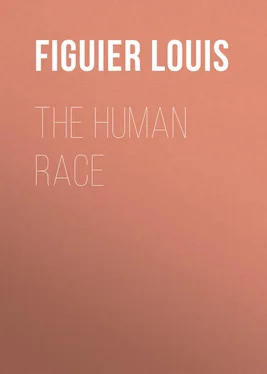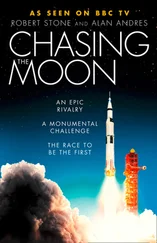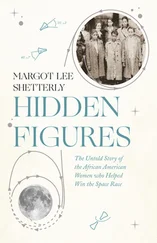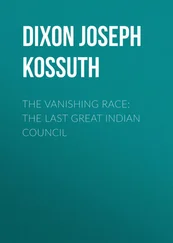Louis Figuier - The Human Race
Здесь есть возможность читать онлайн «Louis Figuier - The Human Race» — ознакомительный отрывок электронной книги совершенно бесплатно, а после прочтения отрывка купить полную версию. В некоторых случаях можно слушать аудио, скачать через торрент в формате fb2 и присутствует краткое содержание. Жанр: История, foreign_antique, foreign_prose, на английском языке. Описание произведения, (предисловие) а так же отзывы посетителей доступны на портале библиотеки ЛибКат.
- Название:The Human Race
- Автор:
- Жанр:
- Год:неизвестен
- ISBN:нет данных
- Рейтинг книги:3 / 5. Голосов: 1
-
Избранное:Добавить в избранное
- Отзывы:
-
Ваша оценка:
- 60
- 1
- 2
- 3
- 4
- 5
The Human Race: краткое содержание, описание и аннотация
Предлагаем к чтению аннотацию, описание, краткое содержание или предисловие (зависит от того, что написал сам автор книги «The Human Race»). Если вы не нашли необходимую информацию о книге — напишите в комментариях, мы постараемся отыскать её.
The Human Race — читать онлайн ознакомительный отрывок
Ниже представлен текст книги, разбитый по страницам. Система сохранения места последней прочитанной страницы, позволяет с удобством читать онлайн бесплатно книгу «The Human Race», без необходимости каждый раз заново искать на чём Вы остановились. Поставьте закладку, и сможете в любой момент перейти на страницу, на которой закончили чтение.
Интервал:
Закладка:
Migration commenced at a very early period, the facility with which our species becomes habituated to every climate and accommodates itself to variations of temperature, taken in connection with the nomadic character which distinguished primitive populations, explains to us the displacement of the earlier inhabitants of the earth. Soon, means of navigation, although rude, were added to the power of travelling by land, and man passed from the continent to distant islands, and thus peopled the archipelagos as well as the mainland. By means of transport, effected in canoes formed from the trunks of trees barely hollowed out, the archipelagos of the Indian Ocean, and finally Australia, were gradually peopled.
The American continent formed no exception to this law of the invasion of the globe by the emigration of human phalanxes. It is a matter of no great difficulty to pass from Asia to America, across Behring’s Straits, which are almost always covered with ice, thus permitting of almost a dry passage from one continent to the other. Thus it is that the inhabitants of Northern Asia have found their way into the north of the New World.
This communication of one terrestrial hemisphere with the other is less surprising when we consider what modern historical works have shown, namely, that already about the tenth century, which would be nearly 400 years before Christopher Columbus, navigators from the coast of Norway had penetrated to the other hemisphere. The inhabitants of Mexico and Chili possess most authentic historical archives, which prove that a most advanced civilization flourished there at an early period. Gigantic monuments which still remain, bear witness to the great antiquity of the civilization of the Incas (Peru) and of the Aztecs (Mexico). It is reasonable to suppose that the inhabitants of America, who thus advanced at a rapid pace in the path of civilization, descended from the hordes of Northern Asia which reached the New World by traversing the ice of Behring’s Straits.
To explain, therefore, the presence of man upon all parts of the continent, and in the islands, it is not necessary to insist upon the existence of several centres, where our species was created. If popular traditions went to show that all the regions now inhabited have always been occupied by the same people, and that those who are found there have constantly lived in the same places, there might be reason to admit the hypothesis of multiple creations of the human race; but, on the contrary, traditions for the most part teach us that each country has been peopled progressively by means of conquest or emigration. Tradition shows that the nomadic state of existence has universally preceded fixed settlements. It is, therefore, probable that the first men were constantly on the move. A flood of barbarians, coming from central Asia, overflowed the Roman Empire, and the Vandals penetrated even into Africa. Modern migrations have been conducted on a still vaster scale, for at the present day we find America almost wholly occupied by Europeans; English, Spanish and other people of the Latin race fill the vast American hemisphere, and the primitive populations of the New World have almost entirely disappeared, annihilated by the iron yoke of the conqueror.
The continent of Asia was peopled little by little by branches of the Aryan race, who came down from the plains of Central Asia, directing their course towards India. As to Africa: that continent received its contingent of population through the Isthmus of Suez, the valley of the Nile, and the coasts of Arabia, by the aid of navigation.
There is therefore nothing to show that humanity had several distinct nuclei. It is clear that man started from one point alone, and that through his power of adapting himself to the most different climates, he has, little by little, covered the whole face of the inhabitable earth.
The Bible proclaimed, long before the studies of modern anthropologists made it known, this principle of the unity of the human species. In like manner as the Bible opposed its monotheistic cosmogony to the different cosmogonies of oriental or pagan antiquity, in like manner it opposes to the erroneous dogmas of the religions and philosophies of antiquity, this doctrine sublime and simple in itself, that man, the last child of creation, rules it as its appointed head and by his moral power. Holy Writ, indeed, says to us: “God has created the whole human race of one flesh.” 1 1 St. Paul at the Areopagus of Athens. Acts of the Apostles, chap. xvii. v. 26.
There is another problem. Did the white, the yellow, and the black man exist from the first moment of the appearance of our species upon the globe, or have we to explain the formation of these three fundamental races by the action of climate, by any special form of nourishment, the result of local resources; in other words, by the action of the soil, if we may use the expression of a conscientious author, M. Trémaux? 2 2 Origine et transformation de l’homme et des autres êtres. 1 vol. in 18. Paris, 1865.
Innumerable dissertations have been written with a view of explaining the origin of these three races, and of connecting them with the climate or the soil. But it must be admitted that the problem is hardly capable of solution. The influence which a warm climate exercises upon the colour of the skin is a well known fact, and it is a matter of common observation that the white European, if transported into the heart of Africa, or carried to the coast of Guinea, transmits to his descendants the brown colour which the skin of the Negro possesses, and that in their turn the offspring of Negroes, who have been brought into northern countries, become as they descend, paler and paler and end by being white. But the colour of the skin is not the only characteristic of a race; the Negro differs from the white, less by the colour of his skin, than by the structure of the face and cranium, as also by the proportion of his members to one another. Is it not, moreover, a fact that the hottest countries are inhabited by people with white skins? Such for instance are the Touaricks of the African Sahara, and the Fellahs of Egypt. On the other hand, men with black faces are found in countries enjoying a mean temperature, as for instance, the inhabitants of California on the coast of the Pacific Ocean.
Let us conclude that science is unable to explain to us the difference which exists between the different types of the human species, that neither the temperature nor the action of the soil furnish an explanation of this fact, and that we must limit ourselves to noting it, without further comment, in spite of the mania which prompts the savants of our day in a desire to explain everything.
We have now another question to consider. Should these white, yellow, or black men, to whom we must add, as we shall see later on, those who are brown and red, all of whom differ one from another in the colour of their skin, in height, in their physiognomy, and in their outward appearance, be grouped into different species, or are we to regard them merely as varieties of species – that is to say, races ? To fully understand this question and to form a judgment of what will result from it, we must ascertain what is understood in natural history by the word species , and by the word race or variety of species . We will therefore commence by explaining the meaning of species in zoology.
The hare and the rabbit, the horse and the ass, the dog and the wolf, the stag and the reindeer, &c., are not likely to be taken one for another. Yet how greatly do dogs differ among themselves in size, in colour, and in their proportions. What a difference there is between the mastiff and the Pyrenean dog! The same observation applies to horses. How different we find in size and outward appearance the large Normandy horse, the London dray horse, or the omnibus horse of Paris, and the small Corsican or Shetland horses which we can carry in our arms! And yet no one is mistaken in them: whether he differ in size, or in the colour of his hair, we always recognise a horse, and never mistake him for an ass; in the mastiff as well as in the bulldog, we shall always recognise a dog. However greatly a rabbit may vary in size and colour, it will never be taken for a hare. The Breton cow, slight and frail, is nevertheless as much a cow in the eyes of a farmer, and the rest of the world, as a full-sized Durham. The same reflection applies with equal force to birds. The turkey which exists in the wild state in America, certainly differs very much from the black or white turkey acclimatized in Europe; but there is no mistake that both of them are turkeys, and nothing else.
Читать дальшеИнтервал:
Закладка:
Похожие книги на «The Human Race»
Представляем Вашему вниманию похожие книги на «The Human Race» списком для выбора. Мы отобрали схожую по названию и смыслу литературу в надежде предоставить читателям больше вариантов отыскать новые, интересные, ещё непрочитанные произведения.
Обсуждение, отзывы о книге «The Human Race» и просто собственные мнения читателей. Оставьте ваши комментарии, напишите, что Вы думаете о произведении, его смысле или главных героях. Укажите что конкретно понравилось, а что нет, и почему Вы так считаете.











![Anne Blunt - A Pilgrimage to Nejd, the Cradle of the Arab Race. Vol. 1 [of 2]](/books/749489/anne-blunt-a-pilgrimage-to-nejd-the-cradle-of-the-thumb.webp)
